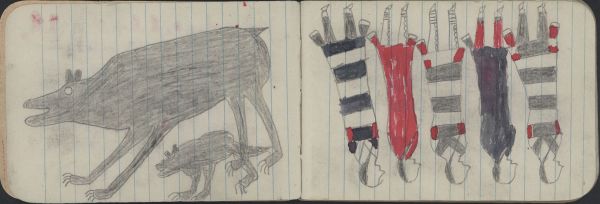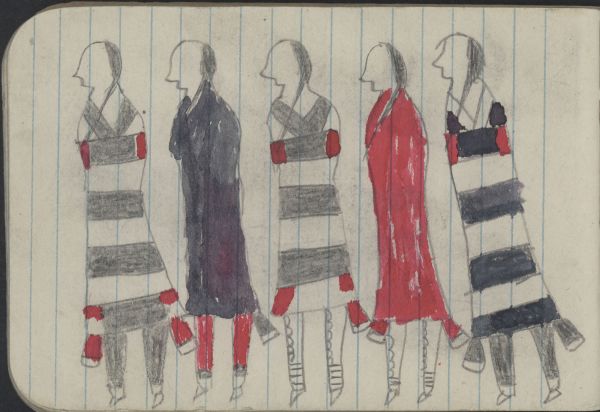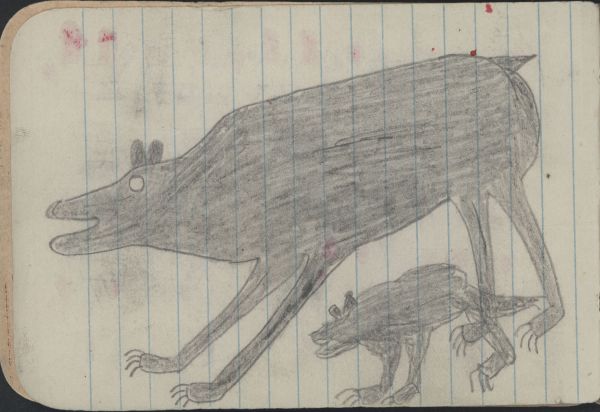ANIMALS, BEAR: Female and Cub; GROUP, WOMEN: Women Wear 1 Red, 1 Black and 3 3rd Phase Chief's Blankets
Ethnographic Notes
2 ANIMALS, BEAR. Female bear with cub. The two Kansas State Historical Society ledgers have seventeen depictions of female animals with young. Candace Greene notes the unusual repetition of images in this ledger (personal correspondence to Ramon Powers 1985). For a general discussion of bear associations, see "The Awesome Bear in Plains Indian Art" (John C. Ewers, in American Indian Art (summer 1982: 36-45). Ewers notes the prevalence of bear imagery from the time of petroglyphs through the present. He finds, "Plains Indians who acquired bear power used it for two purposes�for treating the sick and wounded, and as a war medicine" (38). Both of these would correspond to the conditions of the Dodge City prisoners�they arrived with serious wounds (Low and Powers 2012: 1-2), and they were prisoners of war. Media: Lead pencil outlines, details, and fill
p. 3. GROUP, FIVE WOMEN. Five women stand in a row. Their hair is identical, a braid down the visible shoulder. They have facepaint along the side hairline. Three wear identical Navajo chief's blankets, 3rd phase. One wears a red blanket, and one a black. Two leggings are black, one red, and two uncolored with brass buttons--presumably buckskin. Rings at their ankles are distinct. Their feet are unnaturally small. This is one of the distinctive features of the Dodge City ledgers drawn by Wild Hog, Porcupine, and other Northern Cheyenne men. Candace Greene wrote Ramon Powers the following interpretation ��almost all the figures� [in the Wild Hog and other Northern Cheyenne ledgers from 1879 Kansas State Historical Society ledgers] feet are hoof-like, and seldom in these ledgers are feet or moccasins drawn in normal proportion� (see Low and Powers, 2012: 13). Marjane Ambler quotes Notame�hehe, or North Woman, in �Coming Home� (We, The Northern Cheyenne People, 2008: 30), whose oral account compares the Northern Cheyenne refuges to buffalo herds that scatter in cold weather. Gail Small, a descendant of Fort Robinson Breakout survivor Iron Teeth Woman, tells of the fleeing Northern Cheyenne people having no moccasins (Lawrence, Kansas talk at Haskell Indian Nations University, 12 August 2009). Human figures in all four ledger art notebooks associated with Wild Hog and other Northern Cheyenne prisoners in Dodge City have this characteristic of hoof-like (or bare ?) feet rather than moccasins. Media: pencil outlines and details; blue crayon; red watercolor


